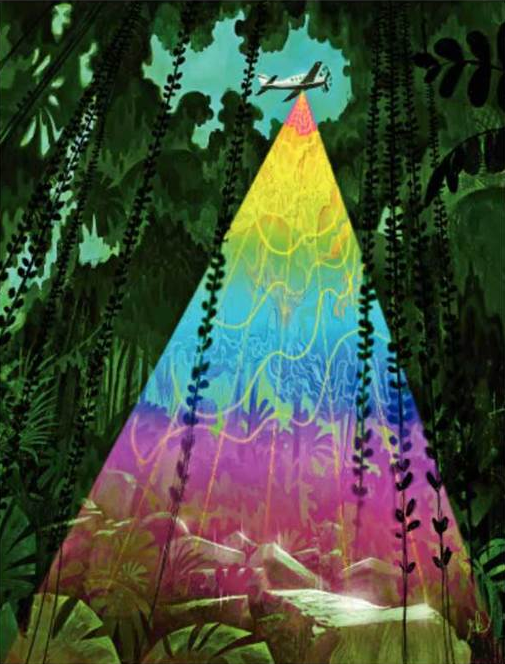There is an excellent article in the New Yorker this week [1. The El Dorado Machine by Douglas Preston] about the use of light-sensing technology LiDAR [2. LiDAR technology uses light sensors to measure the distance between the sensor and the target object. From an aircraft this includes objects such as the ground, buildings and vegetation. For ground based LiDAR it measures building fronts and street furniture. With the latest technology it is also possible to obtain colour values of the scanned surface to create an automatically textured model (source)] to discover hidden ruins, including the mythical ‘White City’, in the rainforests of Honduras and Nicaragua.
“The Cessna slipped down into the valley and levelled off at about two thousand feet above the treetops. Gross located where they had left off mapping the day before, and Fernandez booted up the lidar. The device sat above a hole that had been cut in the bottom of the plane. Inside the box were a laser and a rapidly spinning mirror that together would spray brief beams of infrared light – a hundred and twenty-five thousand per second – onto a swath of the canopy directly below; in three days of mapping, the lidar would fire 1.5 billion laser pulses. Some beams would reflect off the leaves in the canopy, and a small number would penetrate gaps in the foliage and reflect off the forest floor. For each beam reflected back to the plane, the lidar would measure its round-trip time and so gauge the distance travelled to within a centimetre. Later, Muchael Sartori, the mapping specialist, would use software to strip awat all the reflections from the vegetation, leaving only the ground point; these would be processed to create a shaded, topographical map of the terrain and any ruins or structures that might be found on it.”
One to think about for future Living Symphonies site surveys…

